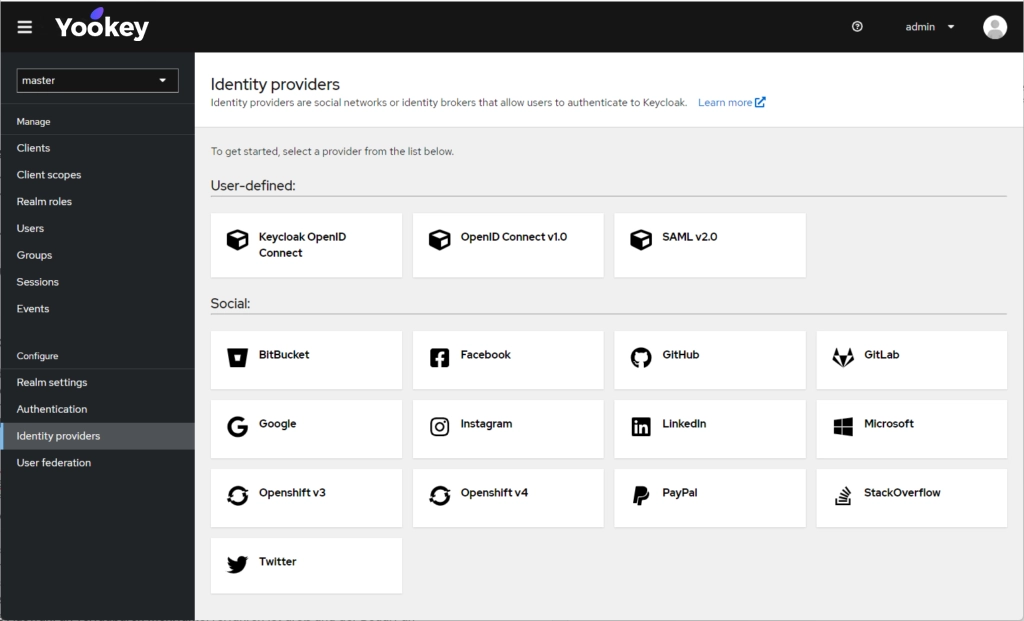Digital Protection with IAM Systems in the NIS2 Directive
- Introduction to NIS2: What Does It Entail?
- Who Does NIS2 Apply To?
- Obligations Under NIS 2
- What Does Identity and Access Management (IAM) Involve?
- What are the Main Features of IAM System?
- IAM System and NIS2: What are the Obligations?
- Corporate Protection Ensured by IAM Systems?
- How Yookey Facilitates Compliance with NIS22?
Introduction to NIS2: What Does It Entail?
The NIS2 Directive (Network and Information Systems) is a regulation by the European Union designed to enhance the security of corporate IT systems. Its adoption is critical for protecting key digital infrastructures.
The directive introduces stricter measures emphasizing proactive cybersecurity risk management. It aims to foster prompt responses to incidents, bolstering the resilience of European businesses against cyber threats, with a particular focus on safeguarding critical infrastructure.
The primary goal is to strengthen IT system protections and promote shared security practices among companies. Additionally, the directive seeks to encourage more cohesive and standardized cybersecurity policies across various sectors.
Who Does NIS2 Apply To?
A major change introduced by NIS2 is the expansion of its applicability to include a broader range of organizations, along with specific obligations for business executives to increase their accountability.
The directive recognizes the increasing importance of IT technologies in the economy and distinguishes between two categories of sectors:
- Essential sectors, such as energy, transportation, healthcare, digital infrastructure, and public administration.
- Important sectors, such as ICT services, food production, pharmaceuticals, and waste management.
NIS2 applies to medium and large enterprises, defined as those with at least 50 employees and an annual turnover exceeding €10 million. It may also apply to small businesses operating in sectors critical to society or national security.
Obligations Under NIS2
Organizations covered by NIS2 are required to adhere to several obligations, including:
- Implementing technical and organizational measures to prevent cyber risks and manage system vulnerabilities.
- Reporting significant security incidents promptly.
- Managing risks associated with the supply chain.
- Complying with national regulations and European cybersecurity best practices.
- Conducting ongoing employee training to enhance cybersecurity awareness.
- Implementing robust identity and access management (IAM) policies.
Non-compliance with these requirements can result in severe penalties, including fines of up to €10 million and mandatory corrective actions.
What Are the Main Features of IAM Systems?
The primary objective of an IAM system is to ensure that only authorized users access corporate resources. This process involves creating and managing user profiles that define roles, privileges, and group memberships, ensuring that each individual has the appropriate permissions for their tasks.
The key functions of an IAM system include:
- Identity management: Creating, updating, and deactivating user accounts.
- User authentication: Using traditional or advanced authentication methods, such as multi-factor authentication (MFA) and Single Sign-On (SSO).
- Access control: Assigning permissions based on business roles or advanced security policies.
- Activity monitoring: Logging user actions and analyzing logs to detect anomalies and ensure regulatory compliance.
What Does Identity and Access Management (IAM) Involve?
An integral part of NIS2 is the management of digital identities and access (IAM) within organizations. IAM systems are technological solutions designed to securely and centrally manage user identities.
These systems control access to corporate resources by managing user identities and permissions. They also enable administrators to analyze user activity, generate compliance reports, and enforce policies aligned with NIS2 regulations.An optimized IAM system enhances organizational security by protecting sensitive data and ensuring compliance with regulatory requirements.
IAM Systems and NIS2: What Are the Obligations?
NIS2 introduces requirements that emphasize the importance of IAM systems, requiring companies to:
- Monitor access: Use secure logging systems to detect anomalies and generate reports.
- Manage identities and access:
- Configure multi-factor authentication (MFA) and administer privileged access, such as system administrators.
- Protect data: Implement encryption to safeguard credentials and sensitive information.
- Ensure resilience and business continuity: Guarantee that corporate systems can recover from cyberattacks.
- Manage IAM risks: Conduct vulnerability assessments and prepare a rapid response plan.
- Adopt a Zero Trust Architecture: Implement continuous authentication methods for all access points, including internal networks.
These requirements are essential to ensure compliance with NIS2, especially for companies aiming to enhance their security.
Corporate Protection Ensured by IAM Systems
IAM systems not only support compliance but also serve a preventive function in safeguarding corporate resources.
Their function is crucial for reinforcing organizational security, reducing the risk of unauthorized access, and safeguarding sensitive information.
The key preventive measures include:
- Rigorous control of identities and credentials.
- Safeguarding against unauthorized access.
- Centralized management of identities using methods like MFA.
- Ensuring compliance with standards such as ISO 27001 and NIS2, which mandate strict identity management practices.
Ultimately, IAM systems are essential for improving security and preventing cyber threats.
How Yookey Facilitates Compliance with NIS2
Yookey is an advanced Identity and Access Management (IAM) platform built on Keycloak, incorporating solutions like multi-factor authentication (MFA) and Single Sign-On (SSO), and designed to comply with NIS2.
Yookey assists companies in meeting NIS2 requirements by implementing the Zero Trust model, which enforces rigorous control at every access point, including internal networks.
The platform also provides access monitoring through secure logs and detailed reporting, aiding in the analysis of cybersecurity incidents.
Ready-Made Templates
Would you like more information?Contact our sales team to discover the available solutions.



